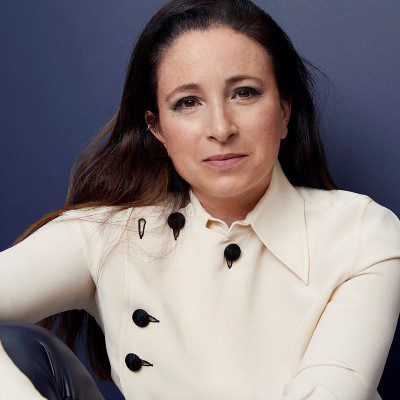Is the ‘Great Return’ the next workplace disruption?
Are workers keen to return to their previous employer?
Why You Should Care
The 'Great Resignation' is disrupting the world of work at the moment.
Could the next workplace trend be the 'Great Return' of employees boomeranging back to their old employer?
UNLEASH chats to HR tech and future of work experts about their views.
COVID-19 and its aftershocks have had an unprecedented impact on the world of work.
The onset of widespread, full time remote working really accelerated an ongoing digital transformation at work. However, the pandemic has also caused employees the world over to re-evaluate what they want out of their jobs and therefore quit their jobs in record numbers.
For instance, in the US, the quit level hit 4.4 million, the highest figure since resignation data started to be collected in 2000.
This so-called ‘Great Resignation’ trend is giving employees the power to look for new jobs at new employers that value their wellbeing and career progression, as well as appreciate and recognize their hard work.
Boomerang workers
However, there are early signs that employees are now once again looking for new jobs and are considering returning to their previous employer.
This so-called boomerang employee trend existed pre-pandemic; a famous example is Steve Jobs who resigned from Apple in 1985, and then returned 12 years later.
Enterprise Alumni research found that 76% of employees would consider returning to their previous employer, while Gartner’s 2020 Future of the Recruiter Survey found that 11% of positions were taken by someone who had previously worked at an organization.
In addition, companies like Citi recruited over 12% of their hires annually from their alumni, while 20% of hospitality giant Sodexho’s hires are previous employees.
Do the signs that this trend is gathering pace now, in this highly competitive labor market, mean that employers who were served during the ‘Great Resignation’ could now experience the ‘Great Return’ of former employees? Pardon the tennis puns.
The ‘Great Return’: The beginning of a trend?

Jamie Kohn, HR practice research director at Gartner.
Gartner HR practice research director Jamie Kohn believes it is “likely we will see an increase in employees who boomerang back to their previous employees”.
This is because employees that left during the pandemic might realize that their new employer didn’t live up to the hype, or “those that left for higher compensation may be lured back by a stronger offer”, explains Kohn.
Dare Worldwide’s CEO, Rita Trehan, agrees that once the turbulence of the ‘Great Resignation’ subsides, employees “may decide that the status quo wasn’t so bad after all” and return to their old job or previous employer.

Rita Trehan, CEO of Dare Worldwide.
This is especially “if that employer offered the supportive and rewarding environment that many employees value”, particularly millennials and Generation Z.
Applaud CEO and cofounder Ivan Harding also notes that the ‘Great Return’ will “only happen if they know their employee experience will be best in class by doing so”.
Enterprise Alumni CEO and cofounder Emma Sinclair, however, goes one step further and believes the ‘Great Return’ is already underway.
Positives of hiring boomerang employees
Sinclair tells UNLEASH: “Companies are grappling with filling open job requisition”; they are “desperate talent”, so they look to look at areas that have been overlooked.

Emma Sinclair MBE, CEO and cofounder of Enterprise Alumni.
Could “there be huge pools of people everyone forgot to engage with? For Sinclair, the answer is alumni, so “boomerangs have rocketed up the agenda”.
So, what makes boomerang employees an attractive hire?
Trehan explains that employees returning to a previous employer can “bring new skills and experience to an organization they already have an affinity with and bring new experience and a revitalized approach”.
Kohn agrees; “the employee has institutional knowledge so it’s easier to get them up-to-speed” and “they bring in a new set of skills they gained since leaving”.
Also, companies “can use boomerang employees as a way of gaining new skills when there aren’t internal opportunities for upskilling available,” Kohn continues.
The fact that boomerangs bring back a perspective of working someone “can be filtered through to the rest of the team” could be a positive in terms of the ‘Great Resignation’.
This is because it demonstrates “the grass isn’t always greener on the other side”, according to Future of Work Institute’s founder and Appjobs CEO Alok Alstrom.
Sinclair adds that ultimately there are “less unknowns in choosing to return to a company you already know”; for companies it is “better the devil you know”.
A good financial move
Further to this, “re-employing previous employees can rapidly increase speed to value,” notes Harding.

Alok Alostrom, founder of Future of Work Institute.
Alstrom notes that money is not only saved on the cost of recruiting, but “on training a new recruit as the former employee should be aware of how the company works”.
Enterprise Alumni also found that, in the long term, boomerangs have a 44% higher retention rate over three years and take half as long to get up to productivity compared to brand new candidates; both of these are real money savers for companies.
Sinclair tells UNLEASH that companies like Citibank save $75,000 per boomerang higher; “Boomerangs are the number one quality source of hire for that very reason”.
Harding continues: “Naturally, previous employees that would be considered for re-employment would be those that have already proven themselves.
“They’ll arrive already knowing the job and the company policies, so the money and resources saved in this area can be reinvested into salary or benefits.”
What must HR do to attract boomerang employees?
While it might be cheaper and less time-consuming to source, hire, and onboard boomerang employees compared to brand new employees, that doesn’t necessarily mean it is easy to do.
There are a few challenges to rehiring employees. “We need to make a cultural shift and stop seeing former employees as disloyal traitors,” states Kohn.
Also, Trehan adds that “the employee they must understand how they must fit into the company, and what is now expected to them.”
“Neither party must expect to just pick up where they left off, and this presents a communication and managerial challenge for HRs and line managers.”
It is important, therefore, that HR thinks carefully about what to do to bring workers back.
Trehan notes: “How you run the business should be the starting point” for rehiring employees.
She picks out “the positive company culture you inspire, the collegiate leadership you encourage, the way you measure success, and the purposeful environment you create” as core things employees should focus on.
“HR must be on the front foot in terms of making their workplace attractive to new candidates”, Trehan concludes.
Harding is also clear that employee experience is essential to the ‘Great Return’. To achieve this, they should look at “why employees left in the first place” and use this to personalize their benefits offerings.

Ivan Harding, CEO and cofounder of Applaud.
He gives the example of “if an employee left because they felt they didn’t have enough annual leave, a previous employer can include additional annual leave into their offer”.
Harding argues this makes employees “feel valued”; an incredibly important factor in the ‘Great Resignation’ and the ‘Great Return’.
Of course, HR tech has a role to play here. Harding notes that “workforce experience layers” can be really useful as, unlike human capital management systems, they prioritize the needs of employees and not HR.
HR tech analyst Josh Bersin agreed: “I’ve discovered that even after deploying a costly new HCM Platform, companies are still not delivering the employee experience they want.”
So a new product category is needed; examples of experience tech layers are Huler, Peakon, Qualtrics, and 15Five.
Some food for thought for companies and HR teams as they look ahead to 2022 and their challenges in talent acquisition and retention.
Sign up to the UNLEASH Newsletter
Get the Editor’s picks of the week delivered straight to your inbox!

Chief Reporter
Allie is an award-winning business journalist and can be reached at alexandra@unleash.ai.
-
Topics
COVID-19
Future of Work
